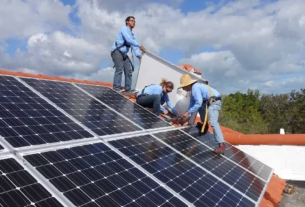In Short : Compact, plug-and-play photovoltaic systems for balconies or terraces, known as “balcony solar,” are becoming a viable urban clean energy option in the United States. These small-scale systems are becoming more and more well-liked due to their low cost, simplicity of installation, and capacity to get around obstacles that conventional rooftop solar systems must overcome.
Adoption of Clean Energy in Urban Areas
Usually, one or two photovoltaic panels and a micro-inverter that plugs straight into a wall outlet make up these systems. They appeal to renters and apartment residents without access to rooftop installations since they are movable and reasonably priced. Balcony solar kits eliminate complicated installations, expensive infrastructure modifications, and, in certain situations, expensive permits as compared to traditional systems.
The Regulatory Environment: A Patchwork of Difficulties
In contrast to nations like Germany, which have embraced plug-and-play solar through explicit safety laws and incentives, the United States lacks uniform state-by-state legislation. Many states and utilities still consider balcony solar systems to be code violations, despite Utah’s early efforts to allow such installations. Despite rising consumer demand, this regulatory ambiguity prevents widespread implementation.
Increasing Green Access in City Environments
The need for balcony solar systems is growing in spite of these obstacles. These kits are becoming more and more popular in the United States as one of the few practical green solutions available to households living in rental or multifamily housing. Urbanization, growing energy costs, and the desire to use sustainable energy even when rooftop choices are out of reach are the main drivers of the market’s predicted rapid expansion, according to market surveys.
Impact of Clean Energy
An important step toward general sustainability in crowded urban settings is the installation of balcony solar systems. They support energy independence, emissions reduction, and the larger energy transition movement by empowering people to produce their own electricity and lessen their dependency on grid-sourced power. They can promote decentralized renewable energy resilience as use increases, particularly in areas where conventional infrastructure upgrades are not feasible.



